The Number 1 Reason Why You’re Bad At Golf
Instruction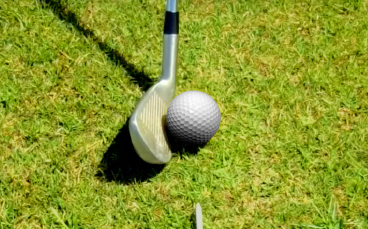
The biggest issue for the average golfer is “turf contact” with irons/hybrids and fairway woods. In this article, I’m going to show you just how big an issue it is for you, and why it is the major reason for you being stuck in a rut with your game.
Without doubt, the biggest issue for the average golfer is “turf contact
GROUND PROBLEMS
This single issue creates a multitude of errors in your game. Here are a few for you;
- Lower distance
- Poor distance consistency
- Poor directional consistency
- Inconsistent and lower spin rates
- Inconsistent launch angles
CONSISTENCY
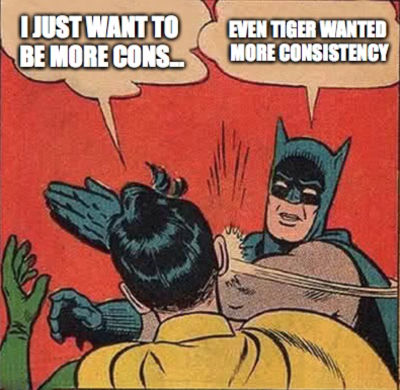 Ah, the bane of every golf teacher’s existence. The words they don’t want uttered from their pupil’s mouths.
Ah, the bane of every golf teacher’s existence. The words they don’t want uttered from their pupil’s mouths.
I just want to be more consistent.
Look, no one is consistent at this game – not even the best in the world. But if you are hitting the ground 3 inches behind the ball every time, you can wave goodbye to any chance of quality golf.
I could fill a whole book with how poor ground contact negatively affects consistency, but just take my word for it.
HOW DO I KNOW WHAT I AM DOING?
Here is a great way to check.
- When playing on the course, place a tee/coin next to your ball
- Hit your shot
- Look down and see the turf interaction. Use the coin to reference where the ball was resting (hopefully it has gone now).
See this below video for a demo.
THE STUDY
I’m so crazy about this topic, I even did a test.
I hit 40 balls with an 8 iron
10 were flushed – ball then turf
10 had the divot start 1 inch behind the ball
10 had the divot start 2 inches behind the ball
10 had the divot start 3 inches behind the ball
I tried to get a mix of deep, shallow and middle depth divots for all protocols.
Here are the results.
PURE STRIKE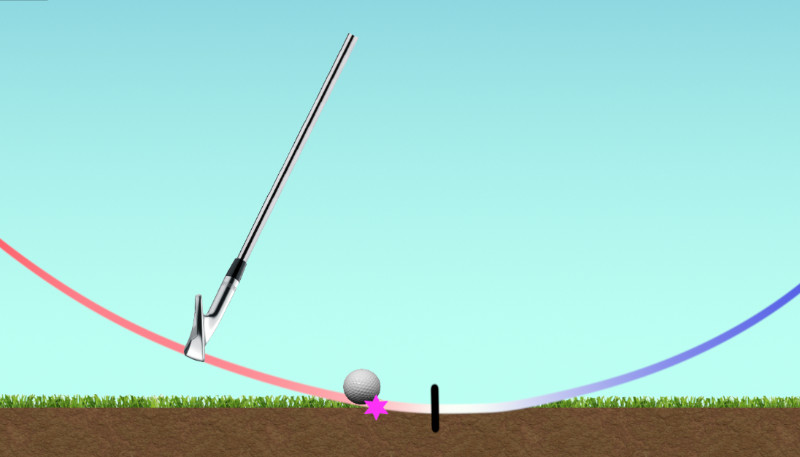
This is how we should hit it – ball then turf.
I did this 10 times with a mix of divot depths. The results showed
- Average distance of 156 yards
- Standard front-to-back deviation of 8ft
- Standard side-to-side deviation of 17ft
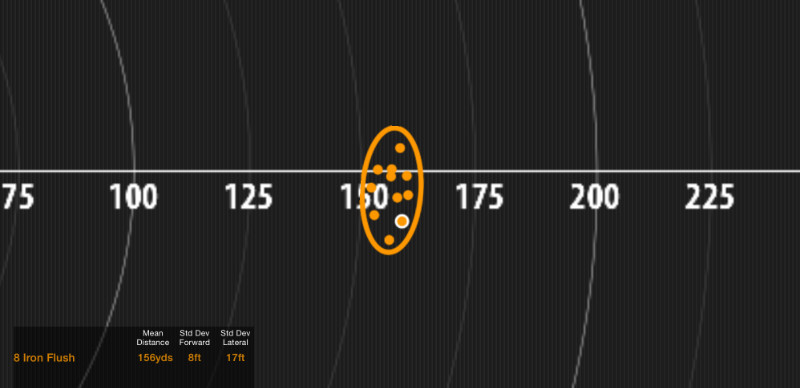 Essentially, this shows great dispersion and great distance control. The birds-eye view of the shot pattern is below.
Essentially, this shows great dispersion and great distance control. The birds-eye view of the shot pattern is below.
You won’t go too far wrong with that dispersion. The longest shot I hit was 160 yards, and the shortest of the bunch was 153 yards.
What was great was, regardless of divot depth, the results were the same.
1 INCH BEHIND
Now I intentionally hit 10 shots 1 inch behind the ball (divot starting location). I did a mix of deep, shallow and mid-depth divots.
The results were pretty good
- Average distance of 146 yards
- Standard front to back deviation of 9ft
- Standard side-to-side deviation of 22 ft
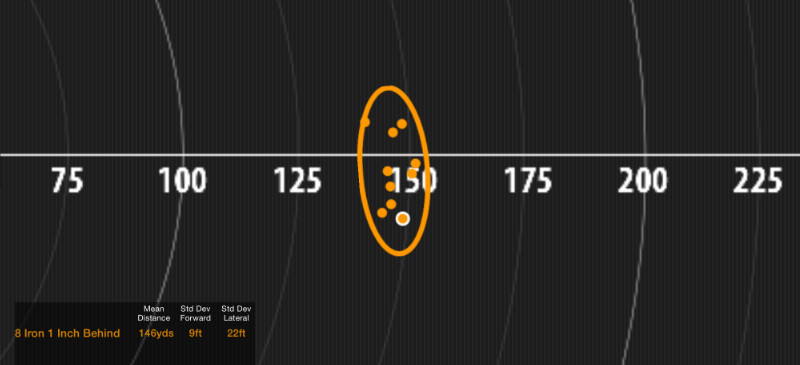 So, still great dispersion laterally and front to back. The birds-eye view of the shot pattern is below.
So, still great dispersion laterally and front to back. The birds-eye view of the shot pattern is below.
So, we see that the distance dropped off by 10 yards – although the distance dispersion was roughly the same as a flushed shot. The shortest was 139.5 yards and the longest was 150.5 yards.
This was pretty playable – and would be hardly noticeable to the average golfer. All depths of divot performed pretty well.
2 INCHES BEHIND
Now we enter where most golfers are – hitting a couple of inches behind the ball. Let’s look at the results.
- Average distance dropped to just 120 yards
- Standard front-to-back deviation was 60 ft
- Standard side-to-side deviation 31 ft
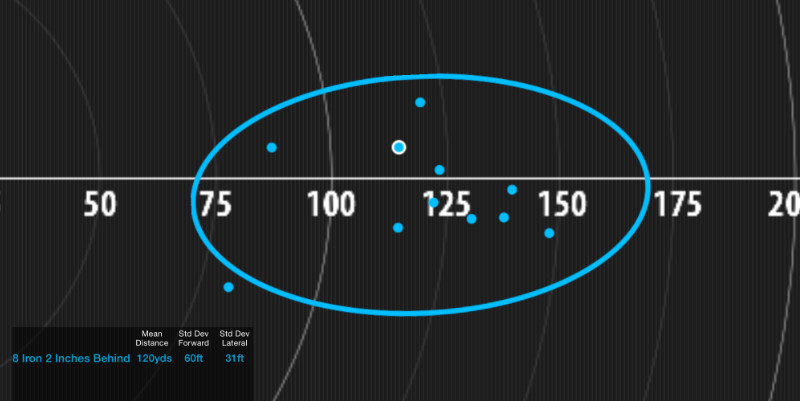 A pretty dramatic change – you can see the birds-eye view of the results below.
A pretty dramatic change – you can see the birds-eye view of the results below.
You can see that the shot circle is much bigger – especially front-to back. The longest shot hit was 147 yards (which was a bit thin), and the shortest was 81 yards. Any divot which was remotely on the deep end was a complete disaster.
This is about as good as most amateursget. They eventually learn that a divot is a disaster so end up just settling with barely clipping the turf. However, this is far from optimal, and their distance control becomes pretty poor – costing them a lot of shots.
But it gets worse!
3 INCHES BEHIND
Now we enter the turf contact of bad amateurs golfers – usually 24 handicap or higher. I tested hitting 3 inches behind the ball – here are the results.
- Average distance dropped to just 111 yards
- Standard front-to-back deviation increased to 72 ft
- Standard side-to-side deviation increased to 33 ft
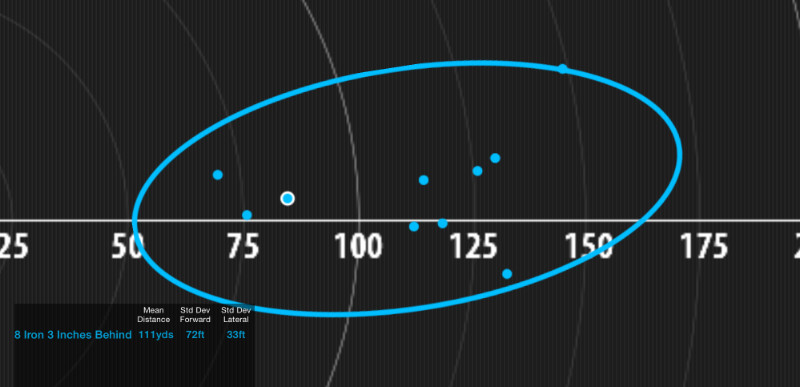 Pretty shocking really. View the birds-eye of the results below.
Pretty shocking really. View the birds-eye of the results below.
The results are not even fully representative of just how bad hitting the ground 3 inches behind the ball is – as I had to throw out a lot of deeper divots because they barely got off the tee!!!
The best I could muster was 147 yards, and the worst was 70 yards (over 50% distance loss) – although that doesn’t include the complete duffs I had to throw away.
The only way I could get any result was by barely clipping the turf and bouncing it up into the ball, which resulted in a couple of wild directional shots.
QUICK SUMMARY
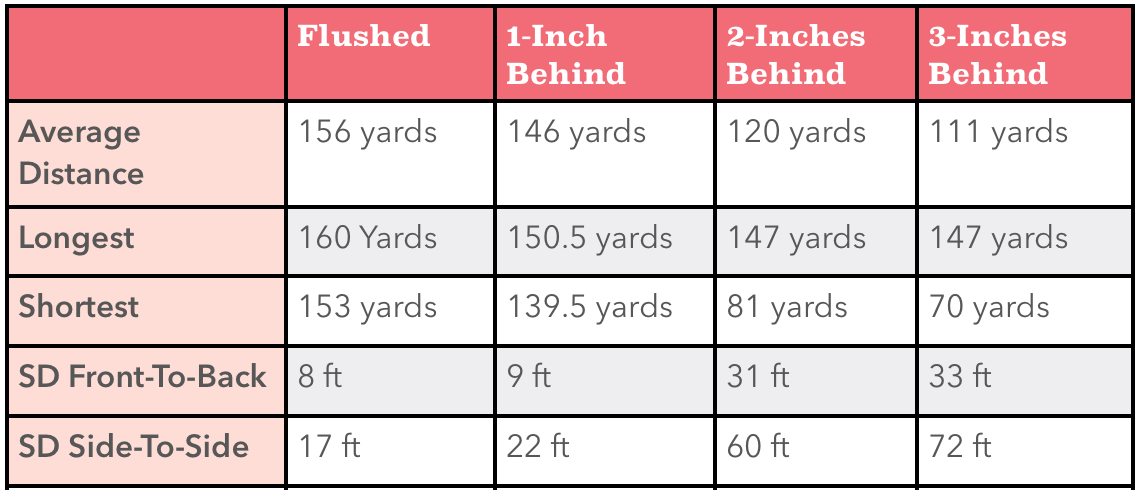 This is a quick summary table of all the important parts of the data grouped together.
This is a quick summary table of all the important parts of the data grouped together.
Some important notes are
- While the flushed shots went the farthest, the best shots in all categories were reasonable
- There was a significant difference in the worst shots
- Just 2 inches behind the ball can be disastrous for your distance control consistency
- 2 inches behind the ball also starts to play havoc with your direction control
- If you hit 3 inches behind the ball, you had better make sure you are not taking a divot of any depth or you are screwed
It seems that the tipping point is past 1-inch behind the ball. The more you go out of that one-inch range, the more susceptible you are to disaster.
Sure, you can hit good shots, but you are really dicing with danger.
I FEEL YOUR PAIN
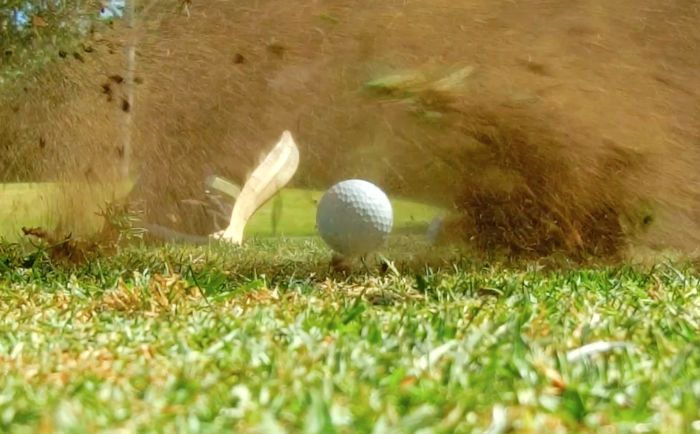 I was that amateur golfer once, looking to the heavens every time I chunked or bladed it through the green.
I was that amateur golfer once, looking to the heavens every time I chunked or bladed it through the green.
The pain is even worse when you are playing on wet turf, where the distance loss is even greater. Or on tight lies, where a drop-kick thin is inevitable.
Whoops!
I see amateur golfers every day with their head in their hands, trying to figure out the backswing secret that will get a crisp strike – an endless search if ever I have seen one.
BUT THERE IS HOPE
When I learned about the science of motor learning, and how powerful
- external focuses
- quality feedback
- differential practice
- variability practice
were, I started to see dramatic improvements in my own strike quality.
Look, I’m no tour professional – I teach for a living and spend all my time creating content for you guys – but I can hold my own in the strike department.
My scores on the Trackman Combine (a game which measures quality of ball-striking/distance control and directional control over a range of shots) puts me up there close to the likes of Poulter, Rose, Dufner and Molinari.
I don’t say that to impress you (well, maybe a little), but just to impress upon you how powerful the concoction of the learning processes I have found and teach are.
POWERFUL STUFF
So, the message is – work on this skill.
Do everything in your power to improve your quality of turf strike and you will reap the rewards of greater distance, accuracy and consistency.
Get within that golden range of 1 inch from the ball.
Obviously, there are ways of doing this on your own.
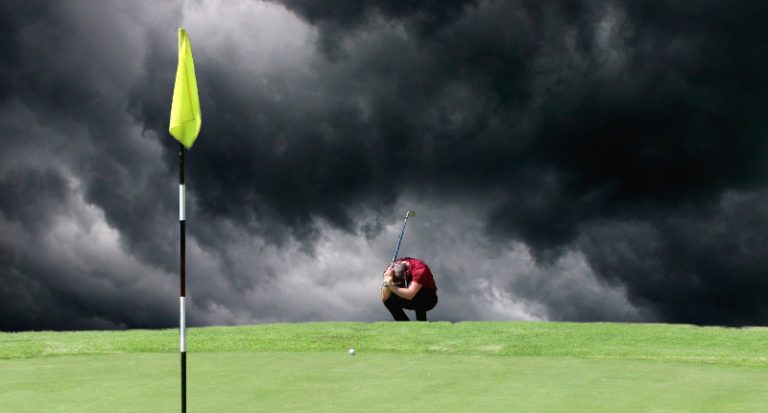 But without an understanding of
But without an understanding of
- low point position and what affects it
- how arc-height control combines with low-point
- how the hand path should work to create pro-like consistency,
it can be a frustrating journey.
And, if you are like most golfers, you never actually arrive at your destination.
This is why I developed The Strike Plan.
In over 3 hours of content (nicely divided into modules for ease of digesting), we go through all of these things and more.
I take advantage of the motor learning science to create drills which are external(meaning outside of our body) and consolidate all of the complexity into simple “do this” exercises.
I get messages from golfers every day telling me how dramatically it has affected their game. So much so, I asked them to write testimonials for the program. CLICK HERE to read what people are saying about it.
You can also find out more about the program by clicking HERE.

